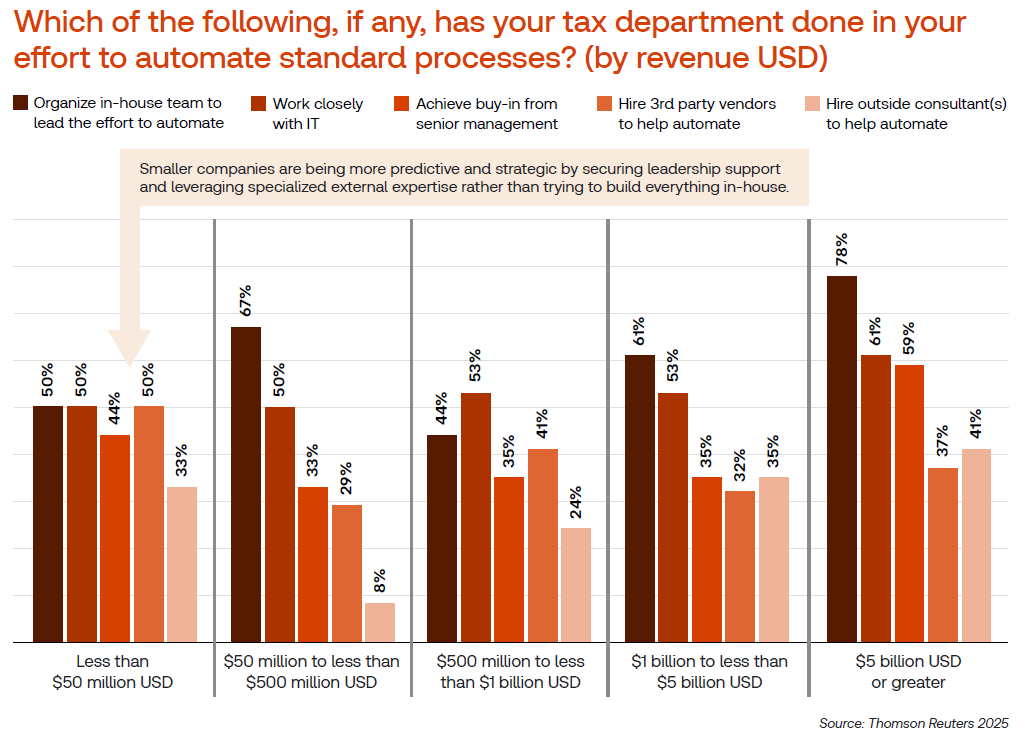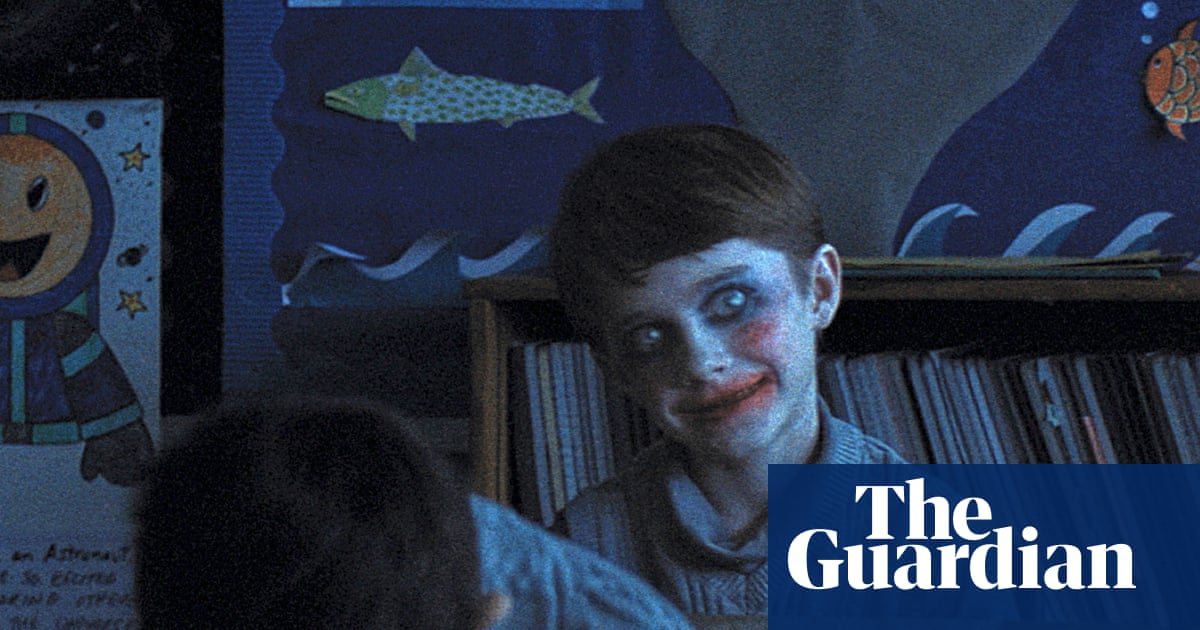Going out on top is something few athletes get to script, but England’s Emily Scarratt has bucked that trend.
The 35-year-old, one of the most decorated players in English rugby history, announced her retirement on 21 October, a month after…

Going out on top is something few athletes get to script, but England’s Emily Scarratt has bucked that trend.
The 35-year-old, one of the most decorated players in English rugby history, announced her retirement on 21 October, a month after…

Most corporate tax departments categorize their automation posture as “reactive” or “chaotic”, according to a recent report; however, in leaving automation initiatives to already overburdened tax professionals, leadership struggles to carry out its tech goals
Key takeaways:
The corporate tax world wishes to automate. This likely isn’t a surprise, given the increasingly complex and ever-changing nature of tax laws and regulations, particularly over the past year. In fact, according to the recently published 2025 State of the Corporate Tax Department report from the Thomson Reuters Institute and Tax Executives Institute, 10% of corporate tax leaders named process automation as their single top priority for the next 18 months, and about one-quarter of them have it as a Top 3 priority. That trails only tax compliance, planning & strategy, and new tax legislation among trends that are top of mind among corporate tax leaders today.
This heightened level of importance for automation may be a reflection of where tax departments view their efforts currently. The same report reveals that more than two-thirds of survey respondents view the levels of automation within their tax departments as reactive or chaotic, while very few are taking an optimized or predictive posture. Clearly, there is work to be done in order to extract the most from workflow tools, or even next-generation technologies such as agentic AI for tax work.
This begs the question, however: Even if corporate tax leaders are trying to automate, how are they going to go about actually doing so? As with many initiatives in the business world, it may be easier said than done.
Corporate tax departments have long been asked to do more with less, and many are feeling the effects of limited resources for daily tax work, let alone new technology investment and implementation. At the same time, however, research reveals that many of these same departments are looking to tackle automation initiatives on their own, eschewing outside aid from service providers or other third parties.
Clearly, something has to give in order to automate the department. Either corporate tax departments need to find resources to dedicate to true automation, or they need to figure out how to better work with outside providers to make automation occur. Because as it stands now, many departments risk being stuck in a state of stasis, never being able to truly bring their automation beyond a reactive posture.
Process automation can provide a major boon to corporate tax departments, if it is implemented correctly. Actions such as integrating and centralizing data through an enterprise resource planning (ERP) system, breaking down silos to facilitate cross-departmental coordination and communication, and implementing cutting-edge technologies such as AI can help tax professionals gain greater speed, accuracy, and efficiency.
However, it’s clear that many tax professionals do not believe their organizations are automating in a way that allows for more proactive technology usage. In fact, 68% say they view their organization’s technology and automation usage as chaotic or reactive — only slightly better than in last year’s report.
This skeptical view towards their tax department’s technology posture also is not unique to any particular size or geographic location of their company. More than 60% of respondents from companies with less than $50 million in annual revenue took a negative view towards the state of automation; yet the same holds true for respondents from companies with more than $5 billion in annual revenue. And while global respondents were slightly more bullish on automation than their counterparts in the United States, the need for more automation is clearly a global goal.
Some interesting differences occur, however, when cross-tabulating opinions of automation with whether a respondent feels their department is adequately resourced. In total, 58% of respondents say they feel their department is under-resourced (an increase of 7 percentage points from last year), while just 38% say they feel their department is resourced about right, with the remainder unsure.
To be sure, there is some technology consternation even among those that say they feel their organization is adequately resourced. More than half (55%) of that group say they feel their automation posture was either reactive or chaotic, displaying that adequate resources are not a panacea to technology woes.
A lack of resources, however, can certainly seem to exacerbate the problem. Among respondents who say they feel their department is under-resourced, 77% called their automation posture chaotic or reactive, 22 percentage points higher than did respondents at adequately resourced departments. Just 4% of this under-resourced group felt their automation was either optimized or predictive, compared to 10% of the adequately resourced group.
One might expect that corporate tax departments would be looking for outside help — either from the rest of the business or from third parties — particularly given the effect of resource constraints on technology efforts. After all, automation is just one priority among a number of complex areas within the tax department, and it’s also not an area that many tax professionals may be naturally equipped to tackle.
However, when asked about their primary strategies for tackling automation internally, many tax departments are still mainly looking in-house. Some are working with their company’s IT or senior leadership, while fewer are working with outside vendors or consultants. Among companies of all sizes, however, the primary way most are tackling automation is through a team within the tax department itself.

Tax departments within larger companies do tend to have more resources, both monetary and in personnel, and thus have more capability to tackle tax automation in-house. Even at smaller companies, however, most are attempting to stretch resources internally rather than setting aside budget for external help.
Often, this means training existing staff on technology, given that few tax departments have technologists directly on staff. In a separate report from the Thomson Reuters Institute and the Tax Executives Institute released earlier this year, the 2025 Corporate Tax Technology Report, our research found that just 15% of survey respondents say their tax departments have a technology-specific professional within the department, while 28% say they have technology personnel shared with another department such as finance. However, the most common way of staffing technology matters is through hybrid roles, the report shows, with more than half (52%) of departments primarily staffing their technology initiatives through hybrid personnel that hold both tax and technology job functions.
Again, this begs the question: How big of a priority is automation truly for today’s tax departments? Department leadership claims that it is one of their top priorities moving forward, but tax professionals still see a reactive or chaotic posture towards automation in their own work. Further, attempts to change this dynamic are largely internal, often being left to personnel with dual tax/technology roles who may be already feeling the pressure of being under-resourced and having to do more with less.
Ultimately, automation should be a top-level strategy decision for tax departments, not something simply alluded to with lip service. Is automating the department’s work processes actually a priority? Would automation provide positive returns, making it worth the investment? What mix of personnel would actually lead to success, rather than to what is expedient?
If automation is truly a priority, corporate tax leaders need to dedicate actually impactful resources to technology projects, above and beyond stretching internal tax professionals further. Otherwise, today’s tax departments risk never moving beyond a reactive technology posture.
You can download a full copy of the 2025 State of the Corporate Tax Department report, published by the Thomson Reuters Institute and Tax Executives Institute, here

The biggest jump-scare the film industry has had in 2025? The return of horror as a main player at the UK box office. As a genre, it has impressively outperformed previous years (a 22% year-on-year increase for the UK and Irish box office:…

Following its launch at Paris 2024, the space quickly became one of the most popular areas in the Olympic Village. Approximately 2,300 athletes from 148 countries took part in virtual reality mindfulness sessions, while thousands more joined art…

TRAMADOL with CYP2D6-inhibiting antidepressants was associated with higher seizure rates in nursing home residents in Medicare. The association came from a population-based cohort using a complete Medicare nursing home sample from 2010 to…

A recent detection from JWST is being widely discussed. The discoverers suggest that it might be an incredible record-breaker: it could be the oldest galaxy we have ever seen. This is yet to be confirmed, and other hypotheses are also very…

Achieving a coherent policy mix – meaning a set of different policies that are synergetic and don’t conflict with each other while pursuing a specific goal – has long been an objective in EU policymaking.
As early as 2001, the EU Strategy for Sustainable Development argued for improved policy coherence and reduced policy spillovers to achieve ‘economically, socially and ecologically sustainable development’.
In the 2019-24 political cycle, the European Commission’s Circular Economy Action Plan emphasised that a coherent mix of policies across all stages of a product’s lifecycle can help scale up green business models and sustainable resource consumption. Similarly, the Green Deal Industrial Plan identified a coherent policy environment as a key pillar in its strategy for rolling out green technologies.
Policy coherence is gaining more prominence as the Commission advances its Omnibus work to simplify the regulatory framework and reduce administrative burdens for EU businesses. In theory, a well-aligned policy mix with minimal conflicts can help ease these burdens and support the EU’s sustainability and competitiveness goals.
But where do things stand today? In short, there’s been some positive developments, but more can (and should) be done – and next year’s expected Circular Economy Act would be a good starting point.
While coherence with existing EU and international policies is one of the criteria in impact assessments, in line with the Commission’s better regulation guidelines, there are very few empirical assessments of the level of coherence in the overall policy mix – and none specifically for the circular economy.
A new paper (full disclaimer, co-written by this author with Valeria Zambianchi) seeks to address this gap by focusing on the EU’s circular economy policy mix as it was shaped during the 2019-24 political cycle. The analysis focuses on four sectors – electronics and ICT, batteries, automotive and critical raw materials – and drew on the experiences of business actors working within these sectors.
The assessment paints a mixed picture. On average, the policies in the mix have a medium-to-high degree of coherence with each other. Importantly, at the strategic level, the European Green Deal stood out as the most coherent policy. Put simply, its long-term framework and strategic direction were seen by businesses as largely in line with the other individual policies in the mix, suggesting a strong and consistent signal to EU businesses.
However, issues start to emerge one level down. Two follow-up strategies – the Chemicals Strategy for Sustainability and the EU Industrial Strategy – ranked the lowest in terms of experienced policy coherence. Moreover, four major strategies, namely the Circular Economy Action Plan, the EU Industrial Strategy, the Chemicals Strategy for Sustainability and the Green Deal Industrial Plan, all show medium-to-low levels of policy coherence with each other, which suggests their goals are not well-aligned.
Issues of incoherence become more apparent when looking into how different directives and regulations in the mix interact with each other. Chemicals policies, namely the Reach Regulation and the RoHS Directive, show low-to-medium levels of coherence with several other policies, including the recently adopted Batteries Regulation, Right to Repair Directive and Ecodesign for Sustainable Products Regulation. What these tensions highlight is that the longstanding disconnect between circularity and chemicals policies persists, despite recent legislative developments.
Even more eye-opening is the low-to-medium coherence between the EU Taxonomy Regulation and most of the other assessed policies in the mix, including the Critical Raw Materials Act, the EU Industrial Strategy and the Green Deal Industrial Plan. Introduced in 2020 to provide a transparent framework for defining sustainable investments, the Taxonomy Regulation has caused businesses to doubt about whether the criteria and selection of sectors are consistent with the priorities of the other policies in the mix.
The Waste Shipment Regulation is another example of a policy demonstrating low-to-medium coherence, reflecting its limited alignment with various other policies. Businesses highlighted the persistent mismatch between waste transport rules and circularity objectives. They pointed to the lack of synergies between the Regulation and the EU’s industrial policy goals, particularly those that aim to boost the use of secondary raw materials stemming from the Critical Raw Materials Act.
Finally, another notable finding is that many businesses perceive limited synergies between the circular economy’s objectives and those of the trade and climate policy domains.
Amid ongoing discussions over the need to reduce the burden on businesses, the above findings highlight areas where sectoral and horizontal policies within the expanded circular economy policy mix have intersected and resulted in incoherence. Going forward, efforts to improve coherence should begin with the Circular Economy Act proposal – expected sometime in 2026 – that will aim to develop an EU single market for circular products and services.
The Act’s upcoming impact assessment is a good opportunity to include an explicit analysis of how synergies between the various policies can be improved and conflicts avoided. This can then provide the groundwork for concrete actions to strengthen the single market for circular products and services, which would be supported by a thorough trade-off analysis.
One such action could be in the domain of public procurement criteria for circular goods and services. These would need to balance climate and circularity objectives and thoroughly consider impacts across the different lifecycle stages of products.
A comprehensive fitness check, like the one conducted in 2014 for the waste acquis, could also be conducted to reflect policy developments over the past decade. On top of this, an oversight cross-DG team within the Commission could be tasked with screening different legislation and promoting compatibility between different policies.
Given that policy goals increasingly integrate objectives from industrial policy, competitiveness, the circular economy, and climate policy, it will also be important to send consistent signals to EU businesses. To do this, future strategies in these domains should be accompanied by a dedicated roadmap outlining how different actions impact cross-cutting areas, as well as a dedicated monitoring framework to easily track progress.
This Expert Commentary is based on the journal article ‘Unpacking policy coherence: a network analysis of the EU policy mix for the circular economy’

A new study projects that US funding cuts to global health aid will have a catastrophic effect on pediatric TB, with children in Sub-Saharan Africa and Southeast Asia likely to experience a significant spike in preventable cases and…

21/10/2025
6 views
0 likes
Better in-flight streaming and video-calling might just become more accessible thanks to a project supported by the European Space Agency (ESA). Building upon the success of an experiment for a new type of antenna terminal together with ESA, Viasat – a global leader in satellite communications – now plans to commercialise its new in-flight connectivity solution called Viasat Amara.
Viasat Amara has a dual-beam phased array antenna that provides both better access to video calling (a latency-sensitive use), as well as video streaming such as watching a football match (a bandwidth-sensitive use). This is possible because the antenna can connect to satellites both in low Earth orbit and in geostationary orbit, depending on what is needed. Links using satellites in low Earth orbit have lower latency with minimal communication delays, whereas those with satellites in geostationary orbit have a high bandwidth and so can transmit much more data.
The antenna terminal was developed, designed and tested within an ESA partnership, under ESA’s programme of Advanced Research in Telecommunications Systems (ARTES). The experiment, conducted in 2021, consisted of a demonstration flight from Rotterdam in the Netherlands to Payerne in Switzerland. The antenna provided a reliable satellite connection en route, enabling passengers to stream content on Youtube and Netflix, and video call with colleagues on the ground.
The antenna uses an innovative design known as an electronically steered phased array. Rather than relying on a single large antenna that physically moves to track satellites, it uses many small components. These individual elements coordinate the timing of their signals to have a unified connection, similar to how a stadium wave forms as each person stands up consequently. This mirrors movement and provides not only a faster way to connect, but also the possibility of connecting to two satellites simultaneously.
Viasat’s in-flight solution’s commercial service is expected to begin in 2028. Thanks to its modular technology, the product can be easily incorporated into existing antennas, making it cheaper and easier to incorporate in passenger airlines.
“Phased array antennas are an evolutionary and much needed step towards more energy and space efficient in-flight connectivity solutions, and we are proud to have contributed to Project Aidan – a key milestone that led Viasat to developing Amara. We’re looking forward to next opportunities for cooperation with Viasat, and many other industry partners – for the benefit of all ESA Member States,” said Massimiliano Simeoni, Aidan’s Project Implementation Manager at ESA Connectivity and Secure Communications.
“The Viasat Aera terminal is a key part of Viasat Amara, our next generation in-flight connectivity solution going far beyond fast and free high-speed Wi-Fi,” said Viasat on its Viasat Amara announcement. “Our pioneering mission remains to help our airline customers maximize connectivity’s enormous potential for brand, loyalty, and growth. It’s been great to work with ESA as one of our key partners to help bring it to fruition.”
This antenna development marks the beginning of exciting opportunities for the future of onboard connectivity.